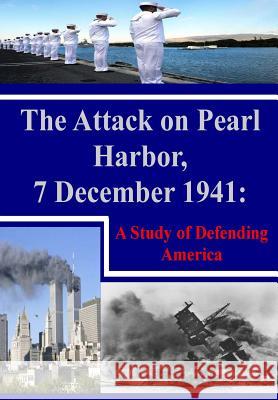The Attack on Pearl Harbor, 7 December 1941: A Study of Defending America » książka
The Attack on Pearl Harbor, 7 December 1941: A Study of Defending America
ISBN-13: 9781499240948 / Angielski / Miękka / 2014 / 170 str.
On 7 December 1941 the United States suffered a devastating surprise attack that thrust it into a worldwide war. Our enemy had extensively planned the attack, conducted detailed reconnaissance of its target to determine how to achieve the most destruction, and had innovatively planned the operation to overcome all obstacles. Two services that needed to work together were never ordered to do so, losing synergy that was sorely needed. The United States had indications that an attack was possible but had no single agency to gather all of the available information for an analysis that would suggest an attack. When the attack started, there were indications that something large was happening, but the word was never spread, and our enemy's attack was devastating. Sixty years later the United States was again thrust it into a worldwide war. On 11 September 2001 enemies of our nation conducted an overwhelming surprise attack against our homeland. Our enemy had again meticulously planned the operation and conducted extensive reconnaissance of its targets before its destructive attacks. Many agencies in our government had indications of an attack, but again, there was no single agency that analyzed all available intelligence to provide us a warning. As word of the attack spread, people refused to accept that the impossible was happening, and again our enemy delivered an overwhelming attack. As our nation prosecutes the global war on terrorism, it is imperative that we in the profession of arms study those events in which our homeland has been successfully and directly attacked in the past. While attacking our enemies around the world, we must first ensure that our homeland remains completely protected and safe. Not only should we study the tactics, techniques, and procedures of recent operations, but we also need to study history-events where we analyze the actions of both attacked and defender so we are better prepared to handle similar situations that may arise in the future. We should study what mistakes we made and what things we did well as well as the enemy's successes and failures. We must do all of this to increase our ability to prevent another attack on the United States. The United States is a nation in which it is easy to move about and see, even in a time of war, and our homeland is now a part of the battlespace, a target for our enemies. How do we prevent an enemy from observing a target when it is not overtly breaking the law? Our many intelligence agencies provide outstanding intelligence, but how do we gather all of the information to synergistically determine our enemies' intentions and get this information to the commanders who need it? Our job is to keep America safe, and even when we are in the midst of fighting a war, it is critical that we take the time to study the past so we do not make the same mistakes in the future. All dates used in this book are Hawaiian time (Japan is one day ahead of Hawaii). The attack on Pearl Harbor occurred on 7 December, which was 8 December in Japan.
Zawartość książki może nie spełniać oczekiwań – reklamacje nie obejmują treści, która mogła nie być redakcyjnie ani merytorycznie opracowana.











